Exploring Ancient Philippi and a Bus Ride to Drama
How to make the most of three days in Kavala? In addition to everything that Kavala city itself has to offer, two things at the top of ‘must see’ list was visit the archaeological site of Philippi and the town of Drama. Both lie on the same bus route so today I’m going to kill those two birds with one stone. Firstly though, I require something to sustain me throughout the day and head to the Hotel Esperia’s restaurant to sample the buffet breakfast.
Having breakfast included is a lovely treat for a budget traveller and the hotel has a broad range of breakfast items on offer to suit everyone. The hot table offers sausages, bacon, eggs and grilled tomatoes. For those who prefer a continental breakfast the usual selection of hams, cheeses, olives and other salad items are available. Yoghurt, a variety of cereals and fruit is on offer along with a great selection of baked products.
The breakfast room is bright and modern with a small outside terrace which seems to be the regular hang-out haunt for a particularly large seagull. It strolls along the narrow ledge, fixing its beady eyes on the plates of goodies that have been selected by the hotel’s guests. Thankfully it appears happy to window shop rather than carry out a ‘smash and grab’ on our grub.
Now to head off to the bus station which is a five minute walk from Hotel Esperia. The bus station in Kavala is well organised. The left-hand window of the row of sales desks is an information desk. A very helpful gentleman advises me on the bus schedule. I already had an idea of the regularity of the buses as the KTEL Kavala seems as though it is kept updated. This same unfortunately can’t be said of all the KTEL bus services but it is always reassuring to speak to someone to get confirmation. He tells me that the tickets are purchased on board the bus.
The next bus departs to Philippi at 11am so I don’t have long to wait. The bus departures are announced over the tannoy so I keep my ears and eyes peeled for the bus to Drama. You know, I may not have a wide range of Greek vocabulary but when using the Greek bus service, the time invested in learning the Greek alphabet is definitely well worth it.
The bus seems to be mainly locals who’ve been into town for shopping or business. An elderly lady takes a seat next to me and after greeting me with a “Kalimera”, she asks “Germania?” I tell her that I’m from England. I’d usually say the UK but for simplicity, I use the less ambiguous term. She smiles and nods enthusiastically.
It is a pleasant journey that takes the main road to the West of the town and climbs up through a densely populated residential area. It eventually plateaus out and the landscape becomes much more rural. I thumb Philippi into Google Maps to try and gauge when to get ready to depart from the bus. At the front of the bus I can hear an accent that comes from somewhere across the North Atlantic, though I can’t define exactly the dialect.
I didn’t need to use the Google Maps information as the Greek lady sitting next to me had already pre-empted that I was going to depart at Philippi and began to stand from her seat for me. I shuffle down to the front of the bus, exit down the steps and then try to fathom out what’s what. Firstly I look at the bus stop to check the regularity of the buses. “Are you heading to Philippi?” a voice behind me says. As I turned, I put the voice to the one that I’d heard on the bus. “Yes, I’m just trying to fathom out the bus schedules.” “Great, do you mind if I tag along?” “Sure” I reply and after introductions, we get our bearings and head in the direction that looks most likely to be the entrance to the archaeological site.
Gary is from Canada and during our conversations it is clear that he is a very well travelled gentleman which makes him very interesting company. After paying our 6€ entry fee we make our way to the entrance of the site.
I admit that I hadn’t done much reading about Philippi before arriving there but did have a vague bit of knowledge about parts of it. This post-visit research is a whistle-stop tour of some of the events that took place in Philippi and/or are connected to it just to give some context to what is here.
Philippi is a UNESCO world heritage site and has a rich and interesting history. The ancient city of Philippi was originally known as Krinides (and variants of that spelling). It was founded in 360 BC by a colony from the island of Thassos who discovered an abundance of gold, gems, wood and rich agricultural land. The city was subsequently conquered by King Philip II of Macedonia, the powerful father of Alexander the Great. He fortified the city and gave it his name. The Hellenistic period conventionally started in 323 BC marked by the death of Alexander the Great and ran until 31 BC with the conquest of the last Hellenistic kingdom by Rome.
We then see the emergence of the Roman Empire. Philippi was located on the Via Egnatia which at the time was the world’s largest military and commercial road. With its close proximity to the port of Neapolis (now Kavala’s main port) and access to parts of the Roman empire, the importance of this location can’t be underestimated.
In 44 BC, Julius Caesar was assassinated by Cassius Longinus and Marcus Brutus. At the time there were fears that Caesar was becoming obsessed with power and was undermining the Roman Republic. During a meeting of the senate in Pompei, the senators led by Brutus and Cassius, stabbed him 23 times. Conjur up that image from the Shakespearian play Caesar and the famous words “Et tu Brute”. The death of Julius Caesar left Rome divided.
It was the Battle of Philippi in 42 BC that left an indelible mark on the city. On one side was the coalition of Marc Antony, Octavian and Lepidus (known as the second triumvirate) who ruled in the west and on the other Brutus and Cassius who had control of the empire’s eastern lands. Although there is no archaeological evidence that the battle took place in Philippi itself, there is a general consensus that it took place within the vicinity of Kavala – possibly on the plain close to the modern-day Amigdaleonas.
The brutal battle took place over 21 days and involved around 200,000 men from 48 different legions and had two distinct clashes. Antony, Octavian and Lepidus eventually won the battle with Cassius and Brutus taking their own lives by falling on their swords at points when they thought that all was lost.
The story then becomes even more complex. Marc Antony was married to the sister of his former ally Octavian (now Emporer Augustus). He then began a relationship with Queen Cleopatra who was an ambitious leader and fancied a bit of the Roman empire for herself. Antony had already gifted some of the eastern territories to Cleopatra which riled Octavian. He responded by starting a propaganda campaign against Antony. The final straw came when Antony married Cleopatra without acquiring a divorce from Octavian’s sister. It then begins to get even more complex with more power struggles taking place which culminated in Octavian declaring war on Egypt. Marc Antony threw his support behind Cleopatra.
To cut a long story short, the result of this was the Battle of Actium, a naval battle which took place in 31 BC. Octavian, defeated Marc Antony’s fleet and subsequently, Antony and Cleopatra found themselves trapped in Alexandria. Almost accepting of their fate, they waited for the arrival of Octavian and their final demise. As Antony watched his army disintegrate, he was left with no choice but to concede defeat by falling on his sword. He didn’t die immediately and used his last breaths of life to make his way to Cleopatra’s mausoleum. Before taking her own life, Cleopatra used her last moments to beg for the life of her son Caesarion. Octavian refused her pleas and ordered that Caesarion be killed most brutally. Cleopatra’s suicide is well documented and written into the pages of the history books along with film and stage plays.
The Battle of Actium is what defined the Roman occupation in Greece and the back story of Roman history is an important context when trying to understand the history of Philippi.
In 27 BC Octavian made Philippi a Roman colony, naming it Colonia Julia Augusta Philippensis. The city enjoyed the status of ‘Ius Italicum’ which meant that it had equal status with towns in Italy and exempted the citizens and their lands from imperial taxes.
Another important historical event marks Philippi as an area of significant importance and that is the arrival of St Paul who founded the first Christian church in Europe in 49 AD. Before he arrived in the region, Paul was in Troas, the modern-day province of Canakkale in Turkey. Because of its proximity to Troy, Troas became known as Alexandria Troas. Whilst in Troas Paul had a vision of a tall Macedonian man urging him to come to Macedonia to help them. Accompanied by Luke, Silas and Timothy, Paul set off on his journey which took him across the Aegean to the island of Samothrace. From Samothrace, they sailed to the old port of Neapoli now modern-day Kavala.
After landing in Neapoli, the group of apostles made their way to Philippi. Along the way, Paul met a woman called Lydia, a seller of porphyri, a red-purple mineral used for dying fabrics. She and her family became the first converts to Christianity and they invited the disciples to stay. During his time in Philippi, Paul came across a slave girl who was possessed by the devil which enabled her to tell people’s fortunes for money. Paul cast the devil out leaving her unable to tell the future and make money for her owners. Consumed by fury, the slave girls’ owners took Paul and Silas to the magistrates who beat them and threw them in jail.
Whilst in jail there was an almightly earthquake which not only blew the prison door open but also broke open their chains. The jailor was inconsolable knowing that he would be blamed and punished for their escape. Paul and Silas hadn’t fled the jail and told him that he would find redemption in the Lord. The jailor and his family were converted to Christianity and this new religious community developed and thrived.
I do wish that I’d done a little more reading on Philippi before visiting or had paid for a guided tour to get the most out of this incredible site, but I’ve enjoyed reading about it in a bit more detail than I normally would testament to how fascinating this site is. After this rather long preamble now on to the site itself.
When you first enter Philippi one of the first things that you will see is the theatre. The initial phase of the theatre is said to date back to the time of the city’s founder King Philip of Macedonia, around 356 BC. During the 2nd to the 4th century AD, the Romans added to it and is primarily what you will see today. Today it is used to host cultural events. The theatre rests on the edge of the eastern city wall.
At ground level, on either side of the theatre is a parados, a passageway that leads from the set to the stage. Each parados has an arched entrance with the western arch more intact than the one on the east. The carvings are said to be of Nemesis, Ares and Nike, deities connected to gladiatorial combat and wild beast hunts. During the 3rd century AD the theatre was transformed into an arena for animal fights with an underground space where the animals would be kept and then given access into the arena.
The structure in front of the orchestra serves as the scene (skene) and also a place for the actors to change and prepare before going on stage which they would access via the parados. This structure was eventually remodelled into workshops and took the form of a covered portico with a series of arches along the length of the building.
As Christianity took hold, the theatre was eventually abandoned and in the 6th century AD the theatre was destroyed by an earthquake. Its materials were stolen and used elsewhere.
Following the path from the theatre, the next point of interest is the remains of the large, three-aisled early Christian church, Basilica A. It was built in the 5th century AD.
From here my travelling companion and I cross the Via Egnatia towards the Forum which is right in front of us. Neither of us have a map to guide us around the site so we are pretty much playing it by ear. It was whilst walking around the forum that I noticed that the pendant from my necklace had fallen off. This elongated silver teardrop shaped pendant wasn’t just any old piece of jewellery. It was the necklace that my mother was wearing as she passed away in 2017 and I haven’t taken it off ever since.
In times of stress and anxiety I would automatically reach for the pendant around my neck and run my fingers along its smooth surface. I found this quite meditative but I’m now in a state of shock at having lost it. When I noticed the open chain dangling from my neck I must have exclaimed words to the effect of “Oh No!” As I did this a group of four people who were passing by asked what I’d lost. Amongst the network of paving stones and crumbling ruins of ancient Philippi I knew that it would be an absolute impossibility to find the pendant. To retrace my steps back from the beginning of this large archaeological site would be a challenging and possibly fruitless exercise. I decided to go no further than the part of the forum that I’d just walked across. Gary kindly searches with me though the cracks between the paving stones are so deep, that if it had fallen there I would never have seen it anyway.
After a bit of panicked searching, I take the decision to let fate take its course. If my late mother’s necklace had to find a final resting place anywhere, then the ancient city of Philippi is a good place for it to be. Alongside the spirits of King Philip, Marc Antony and St Paul, this symbolic and very special piece of jewellery will have some ‘interesting’ company.
I turn around and continue my walk across the forum where I bump into the group of four people who were all walking with their heads down. “Any joy?” they ask. I was touched and humbled to find that they were also still searching for the necklace for me. I thanked them and explained that I would leave the pendant to rest in its new home. The family of four are Australian parents visiting their son who lives and works in Athens. After an interesting and multinational chat we go our separate ways, passing through the forum and along the remains of a temple and Basilica B.
Basilica B was built on the site of the Greek agora (much like the Roman forum). In 550 AD, the agora was demolished to build the basilica. Four massive pillars made of Roman green marble supported a domed roof. As a second dome was being constructed, the walls collapsed from the weight and the basilica was never dedicated.
Running parallel to the forum and Basilica B is the commercial road which leads us to the famous Octagon complex, dedicated to the apostle Paul. Originally a single-naved basilica was built on the site incorporating the tomb of a Macedonian warrior into a shared wall. The founding inscriptions by Porphyrios, the Bishop of Philippi are inlaid into a beautifully decorated mosaic floor still remain today. This dates the original church to 313 – 343 AD. At the end of the 4th century, the church was replaced by the octagonal church which also incorporated the original mosaic floors.
Back at the theatre, Gary and I realised that we had missed the prison of St Paul – one of the pitfalls of going ‘freestylie’ and without a map of the site. I had planned to do a video call from the prison to my elderly aunt in South Africa who enjoys travelling with me albeit vicariously.
Although we were pretty exhausted and the weather was hot, Gary and I decided to go back in search of the prison and headed back along the road from the theatre, past Basilica A and to the prison of St Paul. We had to scout around a little for it but eventually found it down a couple of steps.
During my video call with my aunt, who knows the bible pretty well, she told me about the story of Paul’s release via the earthquake.
We make our way back to the entrance of the site. I had been told that the town of Lydia, close to the archaeological site of Philippi was also worth a visit. Here I would find the Baptistry of Lydia which was worth a visit. I called into the souvenir shop to ask the directions and was told to walk through the site to the other side and the village is just beyond there. The heat and exhaustion were certainly beginning to get the better of me by now but we persevered. We walked back past the prison of St Paul and then up to the museum where staff gave us additional directions out onto the road to the village.
A short walk from Philippi is the village of Lydia which was like a ghost town. There was hardly any traffic on the road and no other person to be seen. From the road, I could see the main visitor building to the Baptistry of Lydia. The Baptistry is a modern building from the 1970’s built on the spot on the river where Lydia herself was baptised – the first person on European soil to be baptised into Christianity. The site is significant to the story of the area and the modern baptistry is beautiful – I’d seen photographs of it. However, my little legs weren’t up to taking in another site right now. Maybe I’ll come back another day.
As Lydia is on the main bus route to Drama, I decide to catch the next bus there and Gary decides to join me. I work out the direction of the bus and sit in the shade at a bus shelter to rest my weary legs. The village is so quiet that I half expected balls of tumbleweed to blow along the street. However, that was made up for by listening to Gary’s epic world travel adventures and his plans for the rest of this trip.
We don’t have to wait long for the bus which then heads further inland towards our destination. The bus station is the final stop so there is no ambiguity on when to alight. The bus station is located at the side of the municipal park and is adorned with various statues including a tribute to the resistance fighters of WW2 and Greek general Theodoros Kolokotronis, leader of the Greek War of Independence against the Ottoman Empire. Cafe bars and restaurants line the edge of the park and it is a lovely place for families to socialise.
Drama used to be called Dryrama and/or Hydrama meaning rich in water or water park. Sitting in the foothills of Mount Falakro the town is surrounded by fertile plains and was at the heart of the tobacco, cotton and rice plantation trades. Our visit here was brief and I know that I’m not able to do the town justice. Hopefully, another one to come back to visit another time.
Back in Kavala, Gary and I say our goodbye’s. I give him what I hope is some helpful advice on visiting Chios and recommend it for its diversity and beautifully friendly people. Sometimes it’s hard to switch off from work – but it’s always a pleasure to help!
I head back to Perdikes along Kavala’a harbour again for dinner and go back to the hotel to plan tomorrow’s day.

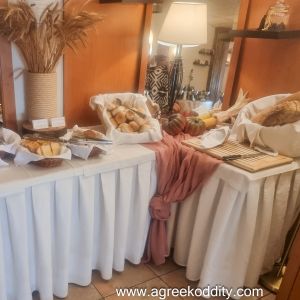

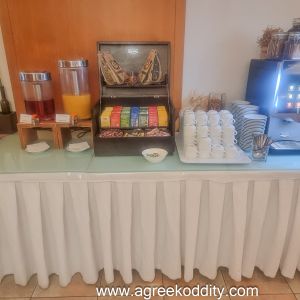
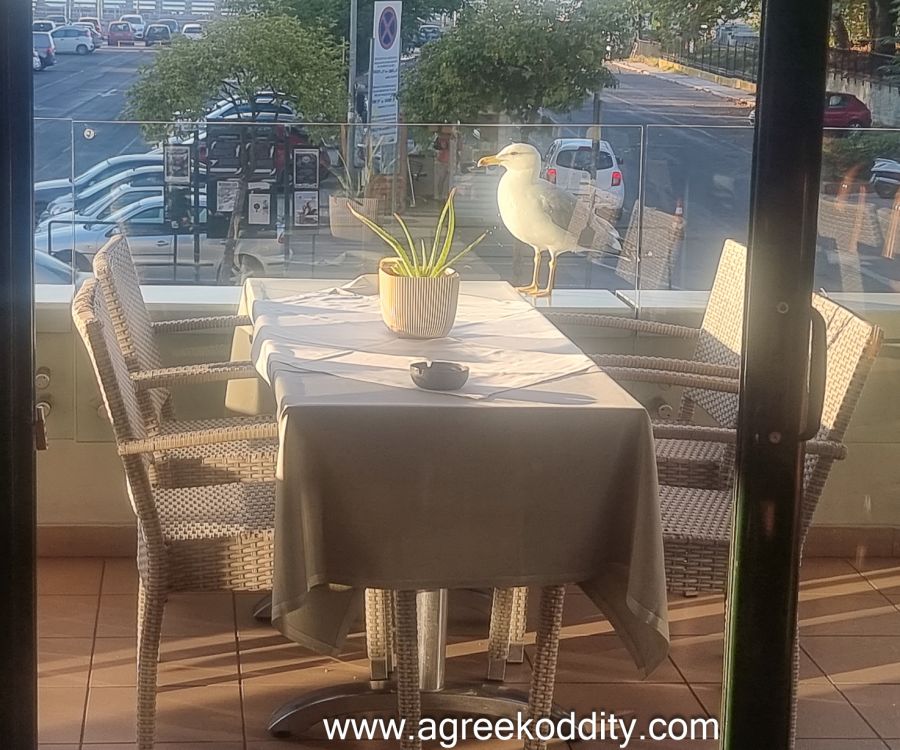
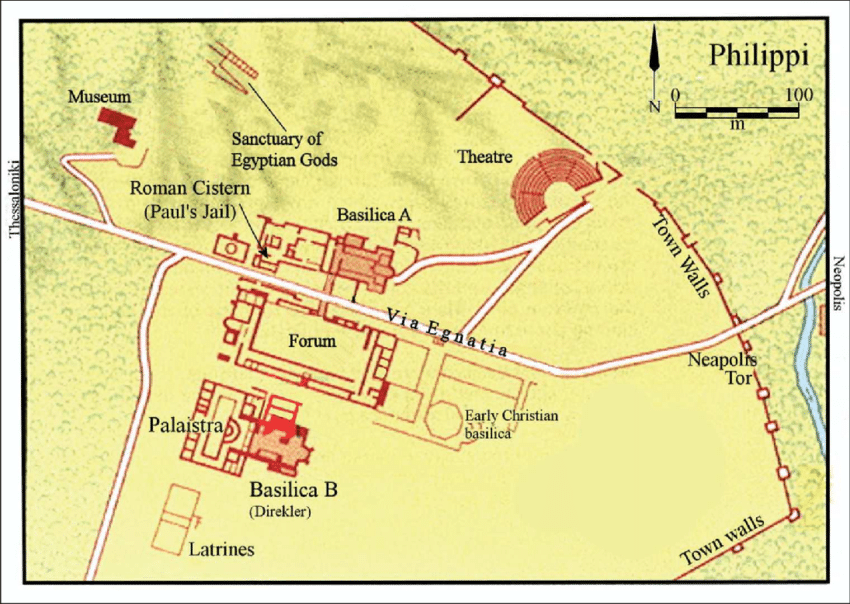

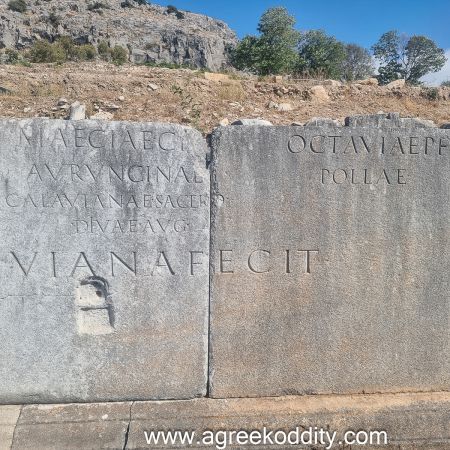
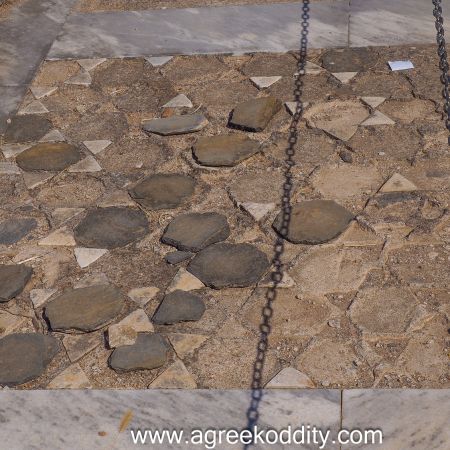
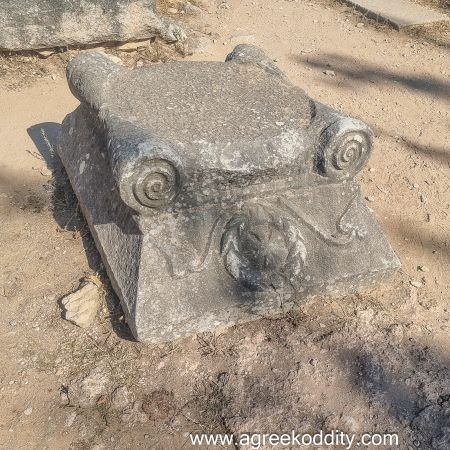


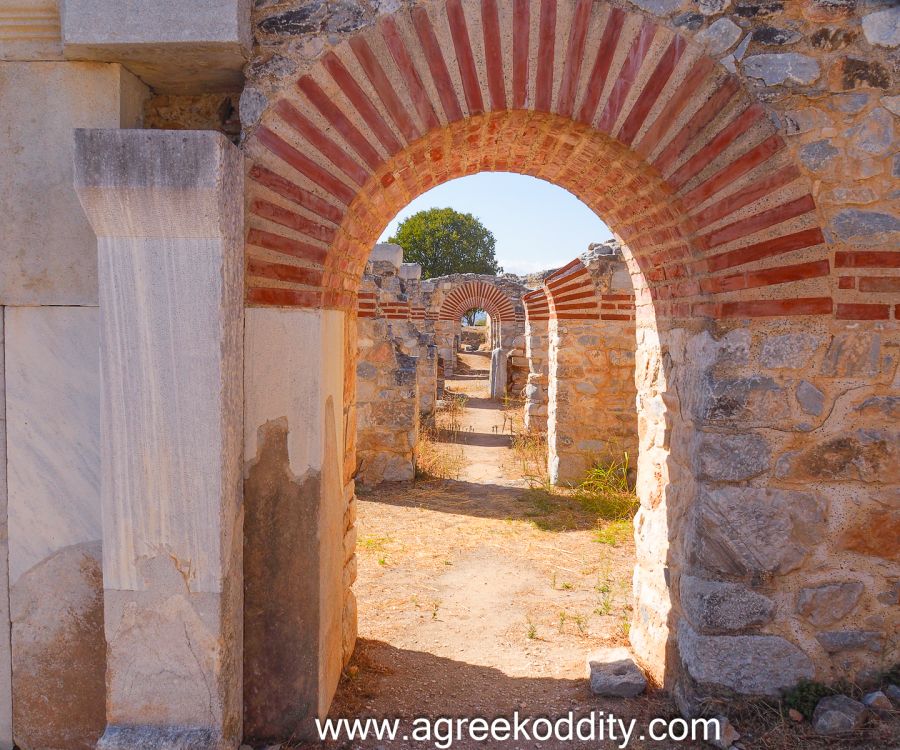
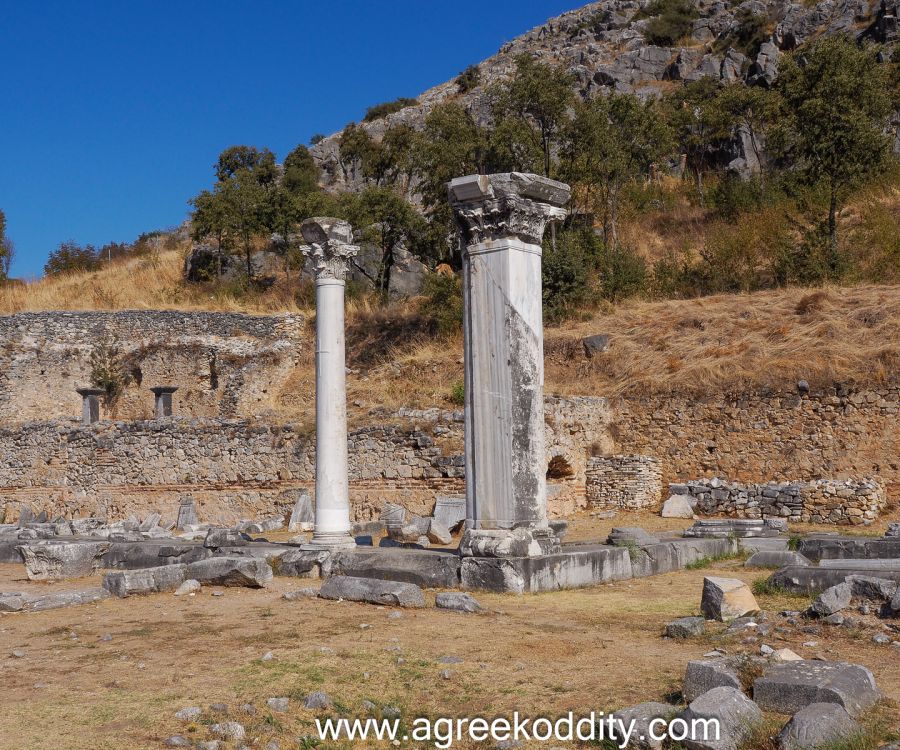

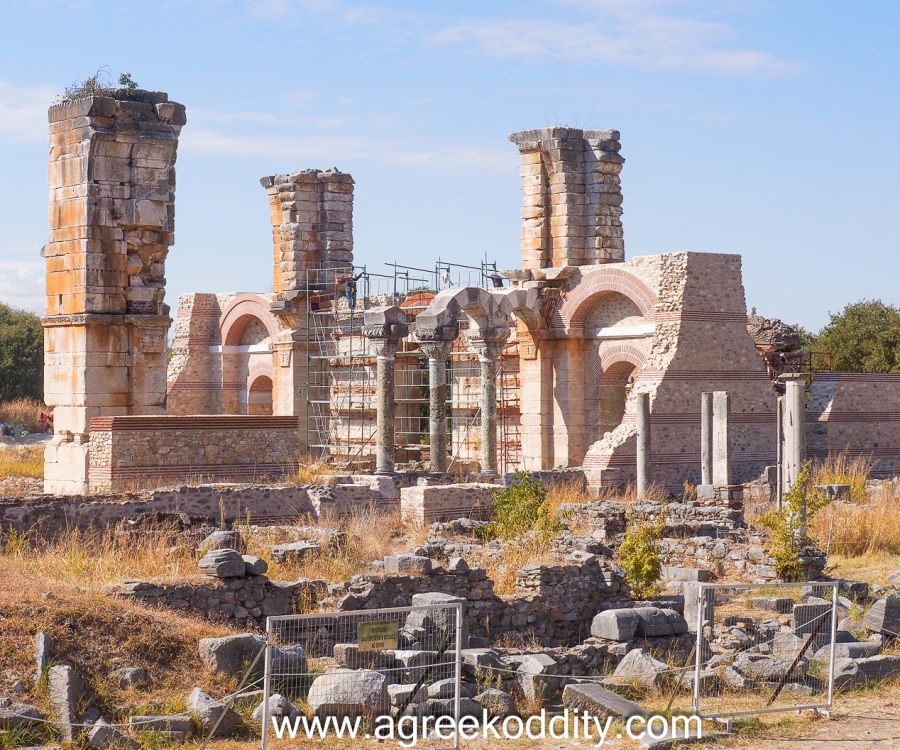
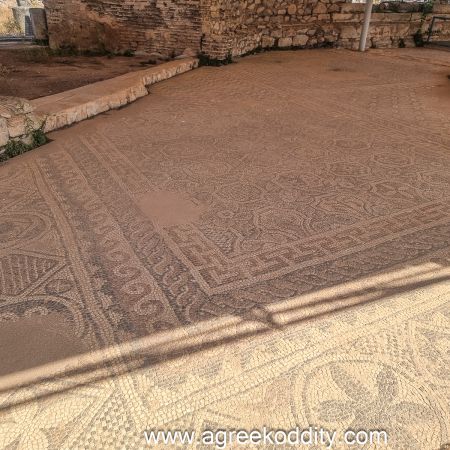
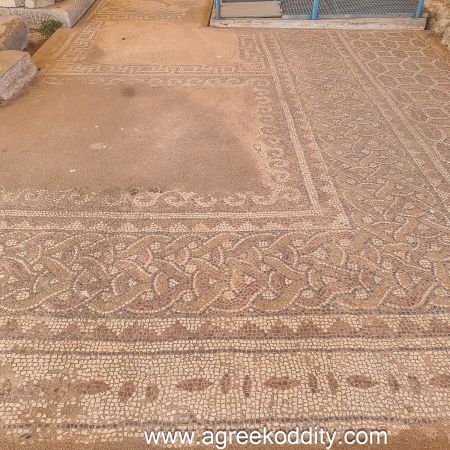


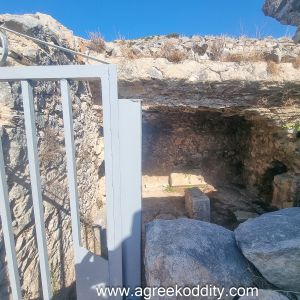

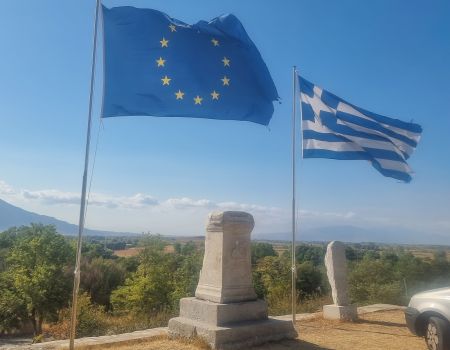
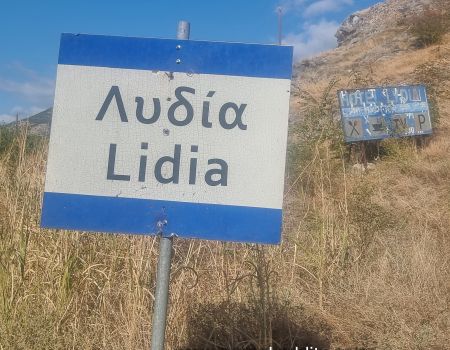
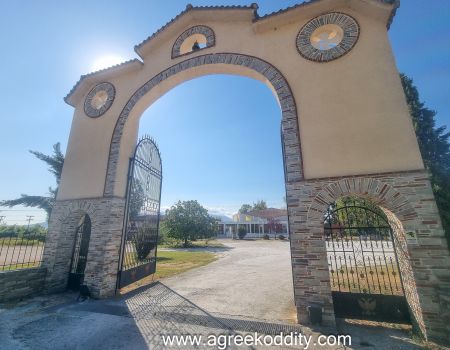




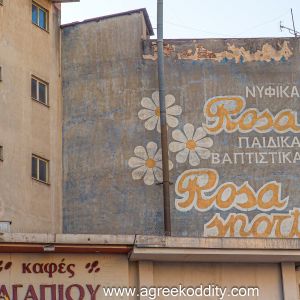
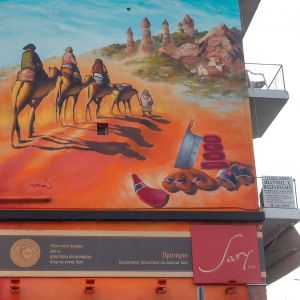






What a wonderful adventurous day you had! With so much ancient history to experience and good company. Too bad about your pendant, but as you said, what better place for its final resting place. Happy travels! Pat Durose
Hey Pat. I do apologise for the delay in responding. The blog has had to take second place to work at the mo. Yes Philippi was so interesting. I must go back one day.! I hope you are well. ❤️